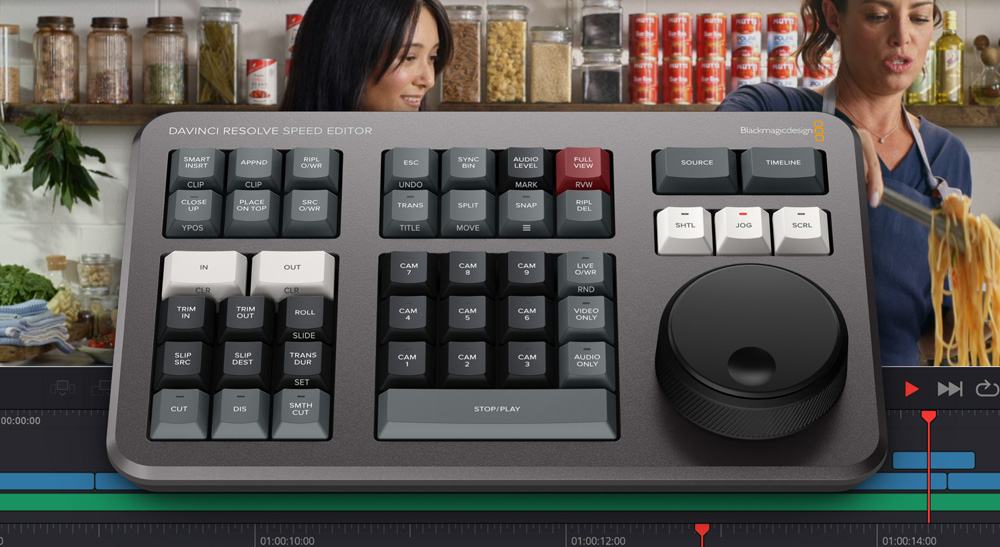
This allows quick shuttling up and down through media without navigating through thousands of clips. For example, the DaVinci Resolve Speed Editor's innovative 'source' button instantly creates a digital source tape of all the clips in an editor's bin, much like traditional video tape-based editing. Utility buttons reduce multiple mouse clicks into a single button press, streamlining the editing process. Accurate cutaways can then be made quickly using an intuitive multiview interface.

The sync bin is an innovative multi-cam that allows users to find shots synchronised to the current shot in the timeline. "The DaVinci Resolve Speed Editor is going to be a very useful tool moving forward on these large multi-camera edits at high resolutions." "DaVinci Resolve Studio was used for colour grading, and I also used it along with the DaVinci Resolve Speed Editor to quickly get the footage to a better starting place before editing began." said co-director Garcia. Real-world users like Editor Kevin Garcia are already leveraging the enhanced speed and efficiency of the DaVinci Resolve Speed Editor on projects like the recent Phoenix Sessions streaming concert series by rock band Jimmy Eat World. An internal battery and Bluetooth BLE connectivity allow it to be used wirelessly, while high-performance key switches, typically found in professional eSports keyboards, are responsive and durable, certified for over 50 million operations. The control layout is optimised with only the most critical editing functions, resulting in a panel that is as compact as possible. The bespoke adaptive search dial allows users to rapidly move through clips, simultaneously applying edits using color-coded keys to trigger functions over multiple timelines. The ultra-portable DaVinci Speed Editor is designed to allow professional editors to work faster regardless of their location.

This method of editing is much too slow for fast turnaround work such as TV commercials, news gathering and promotional video work. Now, typical non-linear editing (NLE) software uses thousands of clips to organize media, which requires laborious mouse-driven drag and drop navigation and manipulation of hundreds, sometimes thousands of media files and timelines. The advantage of traditional tape based linear editing was that all media was played from a videotape, so users could simply fast forward and rewind to see every shot.


 0 kommentar(er)
0 kommentar(er)
